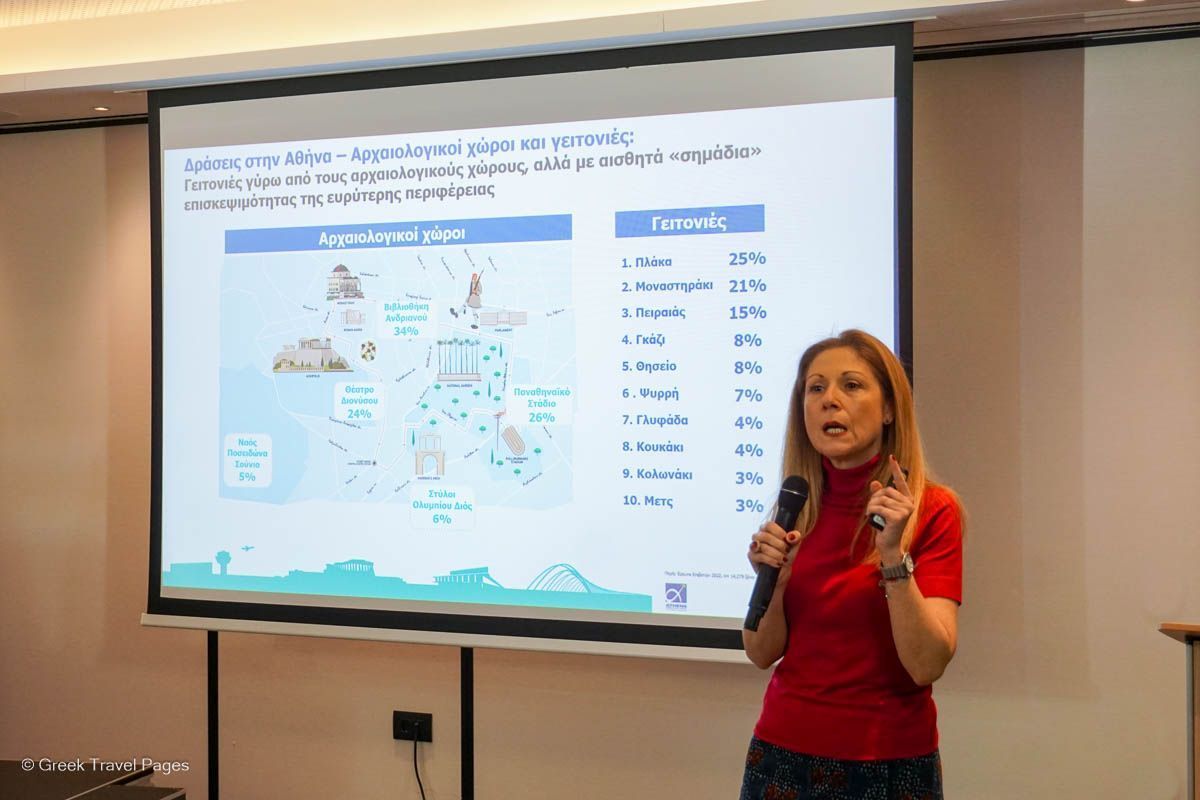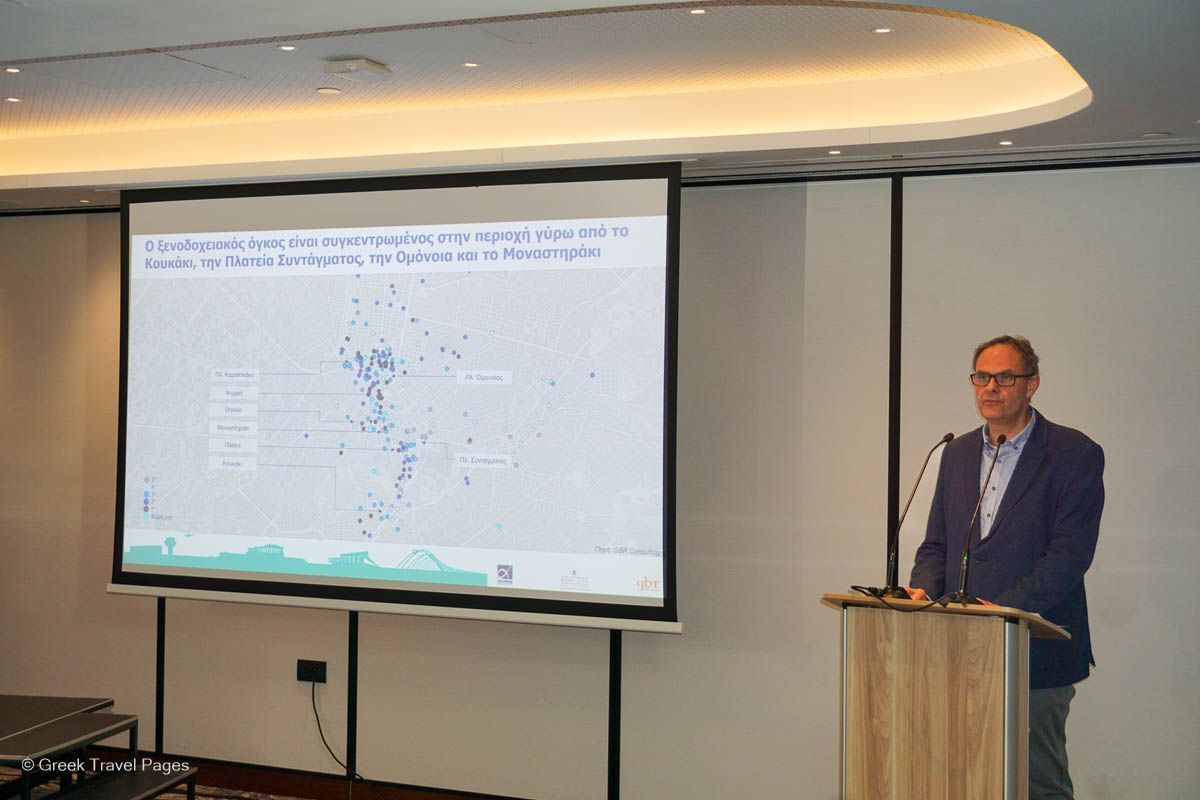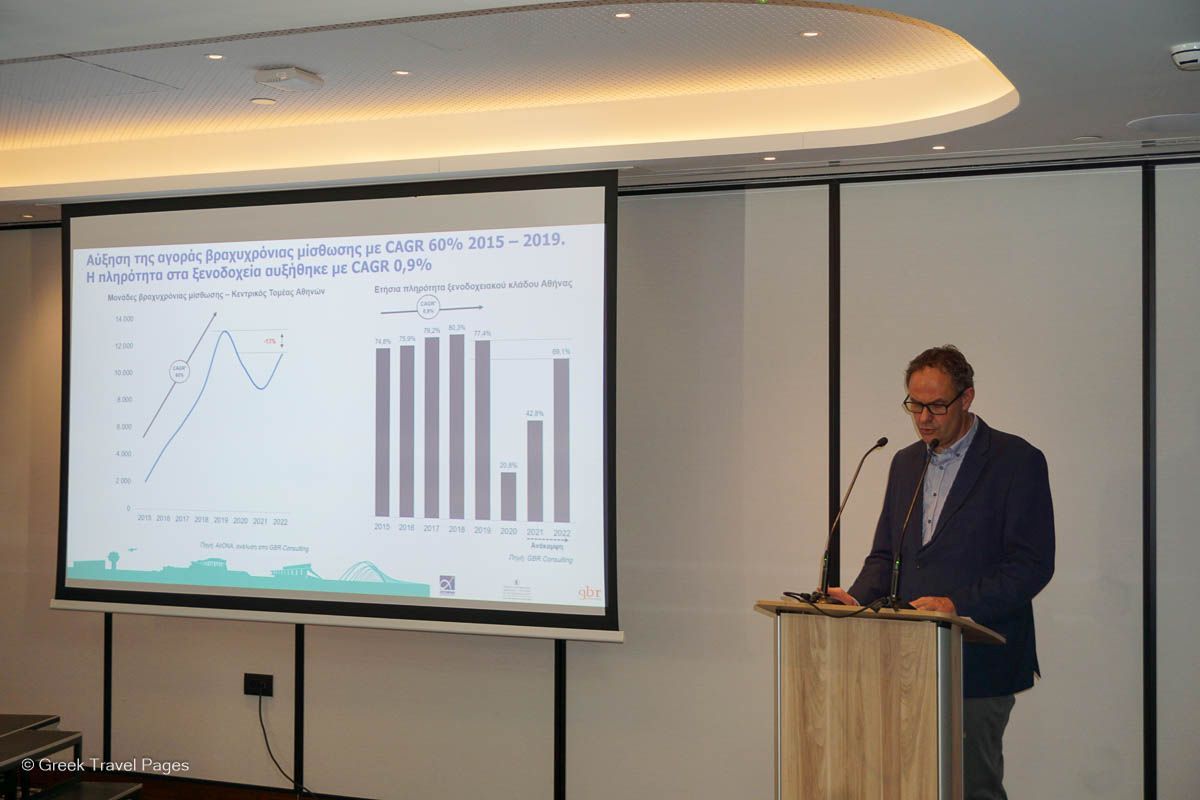Survey: Tourists Consider Athens a ‘Must-see’ Destination

Tourists enjoying a panoramic view of Athens. Photo source: Athens Development and Destination Management Agency (ADDMA)
Tourist satisfaction towards Athens’ tourism product in 2022 increased to a score of 8.4 from 8.1 in 2021, according to the 18th survey on guest satisfaction and performance of hotels of the Athens – Attica & Argosaronic Hotel Association, conducted by GBR Consulting.
Carried out in cooperation with Athens International Airport (AIA), the association’s survey was conducted during May-October 2022 on a sample of some 25,000 travelers from abroad. Travelers were interviewed either during their stay in a hotel in the Greek capital or before departing Athens Airport.

Marypola Kotsi, Supervisor, Market Research Athens International Airport, presenting findings of the Athens – Attica & Argosaronic Hotel Association survey on guest satisfaction.
The main conclusion of the survey is that Athens is considered a “must-see destination” by its visitors, with the largest number of them coming from the city’s traditional markets (USA, UK, Germany, France, Italy) but also from “non-traditional” markets such as Switzerland, Israel, Netherlands, Austria, Turkey and Serbia. It is noted that AIA welcomed 5.6 million foreign passenger arrivals last year, 800,000 less than in 2019.
According to the survey, the cultural experiences and entertainment/nightlife that Athens offers are among the main attributes for travelers when choosing the Greek capital as a tourism destination to visit.
According to GBR Consulting, the average 8.4 score that visitors gave Athens from their experience in the city in 2022 is the highest the Greek city has received in the last seven years.
What do tourists do in Athens? Where do they go?
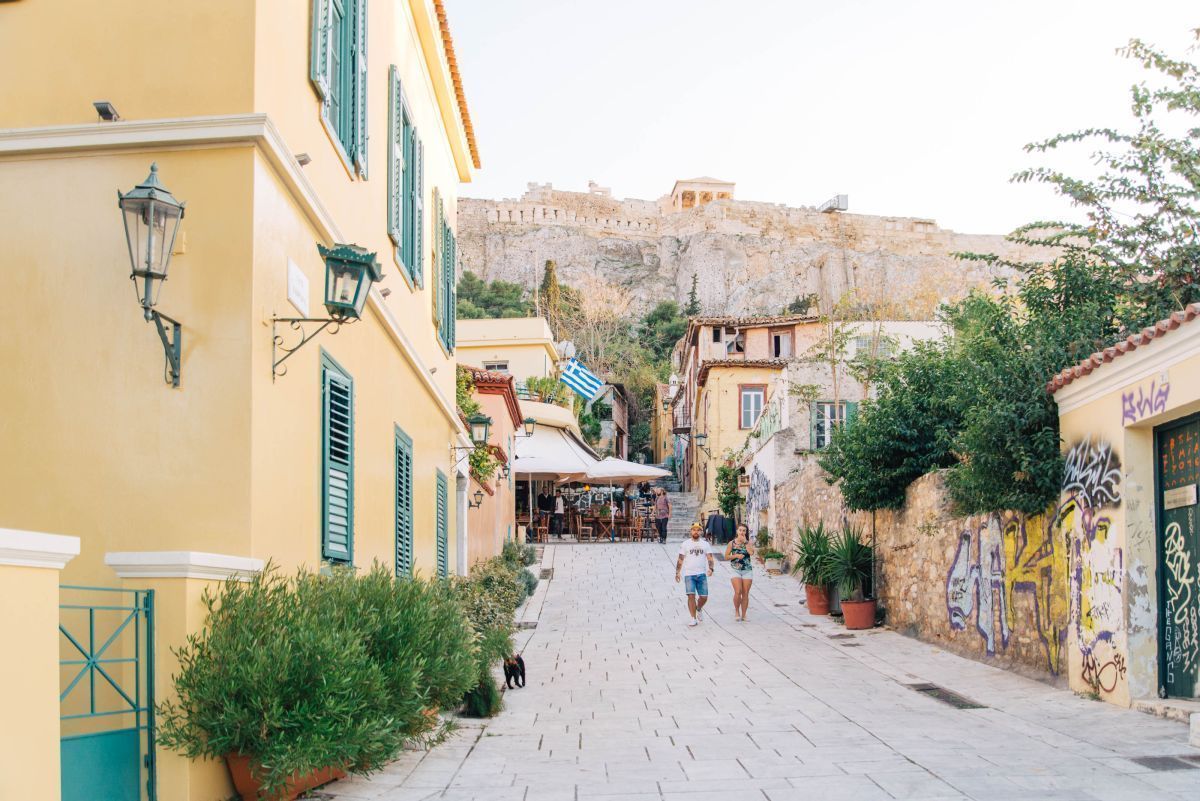
The neighborhood of Plaka in Athens. Photo source: Athens Development and Destination Management Agency (ADDMA)
Last year, 57 percent of visitors to Athens spent at least 24 hours in the city compared to 68 percent in 2019 and the average trip duration was three days, compared to four days in 2019. Seven out of 10 visitors to the capital stayed in a hotel last year.
The survey revealed that 94 percent of visitors to the Greek capital visit archaeological sites and museums; 88 percent take organized thematic tours (mainly city bus tours and cruises in the Argosaronic Sea); and another 88 percent visits marinas, goes shopping and visits cultural centers.
The survey also revealed that eight out of 10 foreign tourists mainly visit two specific museums: the Acropolis Museum and the National Archaeological Museum.
Neighborhoods where tourists mainly flock to in the Greek capital are: Plaka, Monastiraki, Piraeus, Gazi, Thisio, Psyrri, Glyfada, Koukaki, Kolonaki and Mets.
Analyzing the data, the association found that tourists from Israel and Scandinavia choose going to the Stavros Niarchos Foundation Cultural Center; Americans like to spend time at the Zea Marina; and visitors from Central and Eastern Europe opt for Flisvos.
With regard to their interaction experiences with locals (permanent residents), visitors to Athens gave the Greek city a low score.
The GBR satisfaction index also showed that the city’s cleanliness sentiment score was the same as last year (6.5/10). In terms of finding information on city events, Athens scored 7.3 (up from 6.8 last year) and in terms of signage and general information, the Greek capital saw a 7.6 score, up from 7.4 in 2022.
60% will return
Overall, 22 percent of those surveyed consider that Athens was “above their expectations”, while 60 percent want to return in 2023.
During the survey’s presentation at a press conference in Athens, AIA Director of Communication & Marketing Ioanna Papadopoulou said that the “enlightening” findings and high scores of the Greek capital’s offered tourist product and services highlight the dynamic tourism recovery of the city.
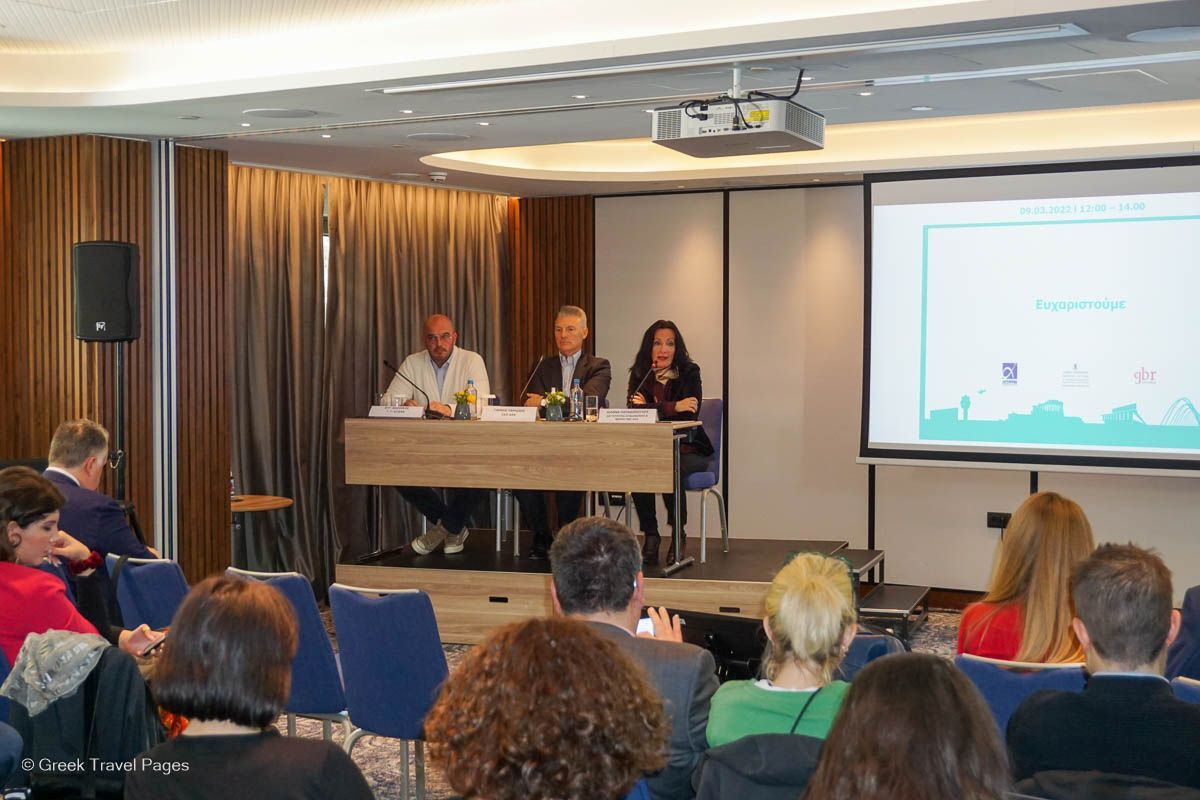
Athens International Airport Director of Communication & Marketing Ioanna Papadopoulou speaking during the press conference. She is accompanied by Athens – Attica & Argosaronic Hotel Association Secretary General Evgenios Vassilikos and Athens International Airport CEO Yiannis Paraschis.
“Thus contributing decisively to restoring ‘destination Athens’ among the top choices in the world,” she said.
Everyone goes to the Acropolis
An interesting finding in the survey was that despite visitors to Athens having different interests, almost all of them, including business travelers, had one thing in common: they all visited the Acropolis and the Acropolis Museum and then took a stroll in Plaka and Monastiraki.
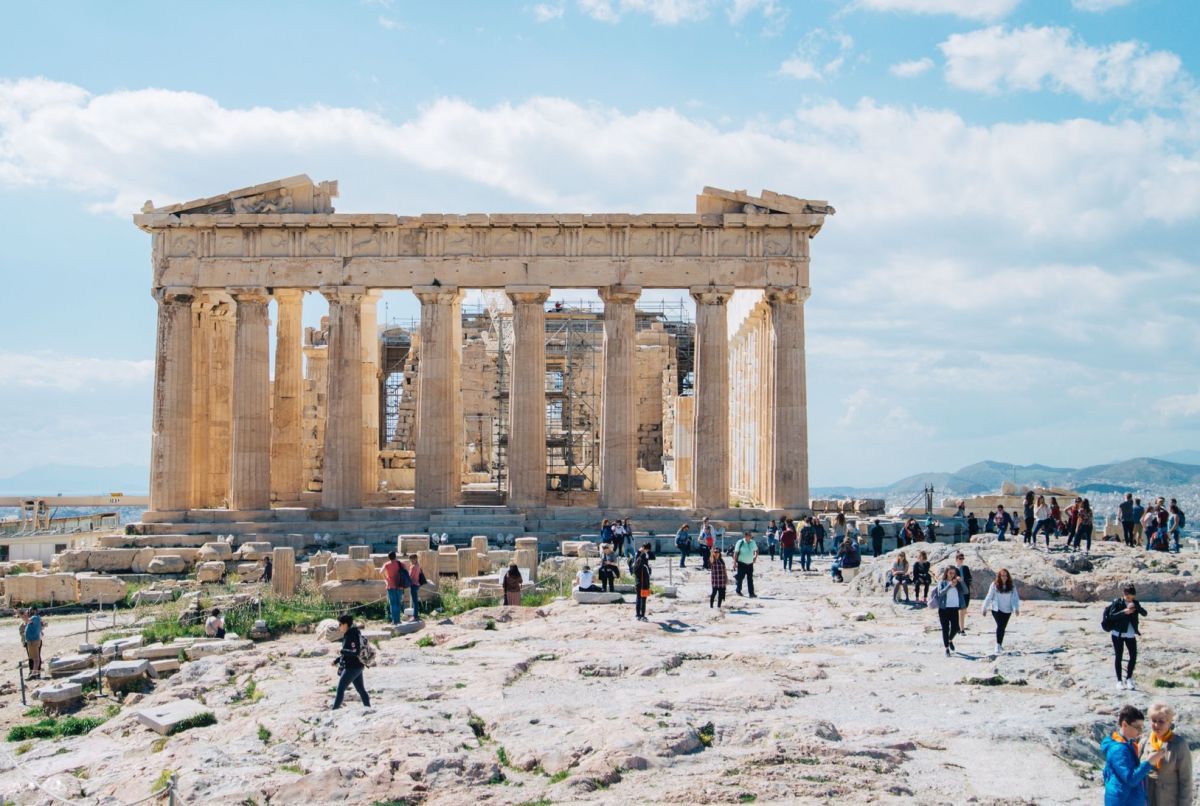
The Acropolis monument in Athens. Photo source: Athens Development and Destination Management Agency
The survey highlights that this also means that tourist flows are concentrated in certain neighborhoods in the city and focused almost exclusively on recreation and entertainment, affecting permanent residents who see the urban viability of their neighborhoods declining.
City’s coastal area is getting noticed (finally)
A positive finding from the survey is that awareness regarding Athens’ coastal area has improved, with 63 percent of tourists having visited it last year and the majority of travelers who hadn’t are now aware that the Greek capital is in fact close to beaches.

Stefan Merkenhof, Managing Consultant of GBR Consulting, presenting findings of the Athens – Attica & Argosaronic Hotel Association survey on the performance of the hotels in the Greek capital.
On the other hand, although visitor awareness of the Saronic Gulf islands, which are considered ideal destinations for getaways from the city, is improving, its still remains at low levels. Last year, the Saronic island that saw the most visitors from Athens was Aegina followed by Hydra. The survey also showed that the island of Salamina (part of the Attica Region) saw an increase in visitors last year.
The secretary general of the hotel association, Evgenios Vassilikos, highlighted the need for those involved with the tourism product of Athens and Attica to focus on the survey’s conclusions and to use them in combination with the useful data from the recent report on the city’s carrying capacity.
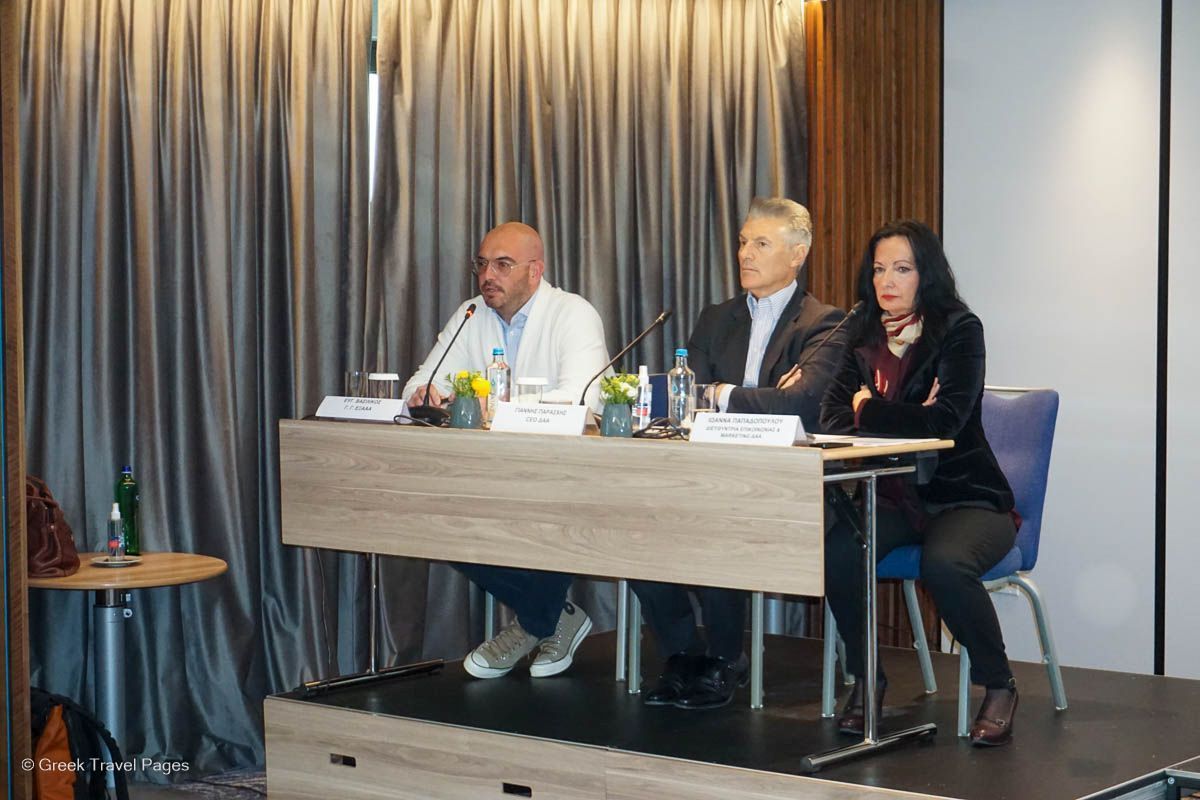
Athens – Attica & Argosaronic Hotel Association Secretary General Evgenios Vassilikos, Athens International Airport CEO Yiannis Paraschis and Athens International Airport Director of Communication & Marketing Ioanna Papadopoulou.
“Our goal must be to strengthen the quality image and offer of Athens to its visitors… Therefore, a long-term strategic plan is necessary and at the same time we must immediately focus on strengthening actions to boost the 2023 and 2024 seasons,” he said.
The survey also included data on the hotel offer in the Greek capital. Among the survey’s key findings:
– the majority of the city’s hotels is in the areas around Koukaki, Syntagma Square, Omonia Square and Monastiraki.
– in 2022, some 72 percent of all hotels in Attica (not including the Saronic Gulf Islands) were located in the Athens city center
– the number of hotel rooms in the center increased by 19 percent during the 2015-2022 period
– the number of short-term rental apartments in Athens’ downtown market grew at a compound annual growth rate (CAGR) of 60 percent between 2015-2019
– the number of short-term rentals in operation declined in 2020 and 2021 and rebounded in 2022.
Moreover, the survey included the latest available data on the performance of the city’s hotels. In Q1 2022, hotels in Athens continued to be affected by the pandemic (travel restrictions), but from July 2022, occupancy reached 2019 levels.
Therefore, for the full year of 2022 hotel occupancy levels in Athens decreased by 10.7 percent compared to 2019. The Average Room Rate increased by 14.4 percent in 2022 compared to 2019, during a period of high inflation.
Passenger traffic and the number of flights at Athens International Airport (AIA) in 2022 exceeded the European average. Athens Airport ranked third among European metropolitan airports.
In addition, when comparing the performance of Athens to that of Mediterranean cities in 2022, only Istanbul managed to surpass 2019 levels in hotel occupancy. In terms of room rates, Rome outperformed Mediterranean cities, but also most European capitals, with a 32 percent increase in 2022 compared to 2019.
This was the second time Athens International Airport (AIA) cooperated with the Athens – Attica & Argosaronic Hotel Association on the annual guest satisfaction and hotel performance survey for the Greek capital.
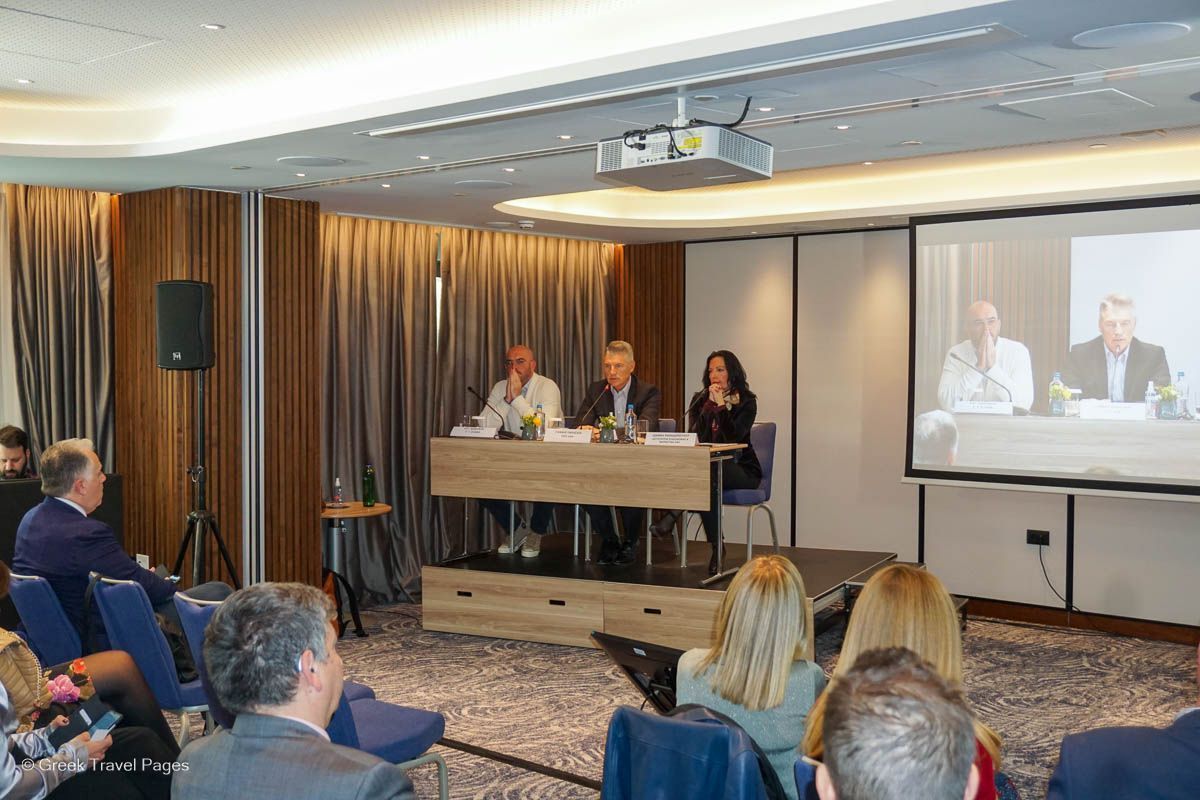
Athens International Airport CEO Yiannis Paraschis (center) commenting on the survey’s results during the press conference.
AIA CEO Yiannis Paraschis highlighted the importance of cooperation and joint efforts for the promotion and continuous improvement of the city’s tourism product through quantitative and qualitative research.
“In particular, this survey once again gives us very important and useful data regarding the special features of the city’s visitors that will help us in the the strategic development of destination Athens,” he said.


